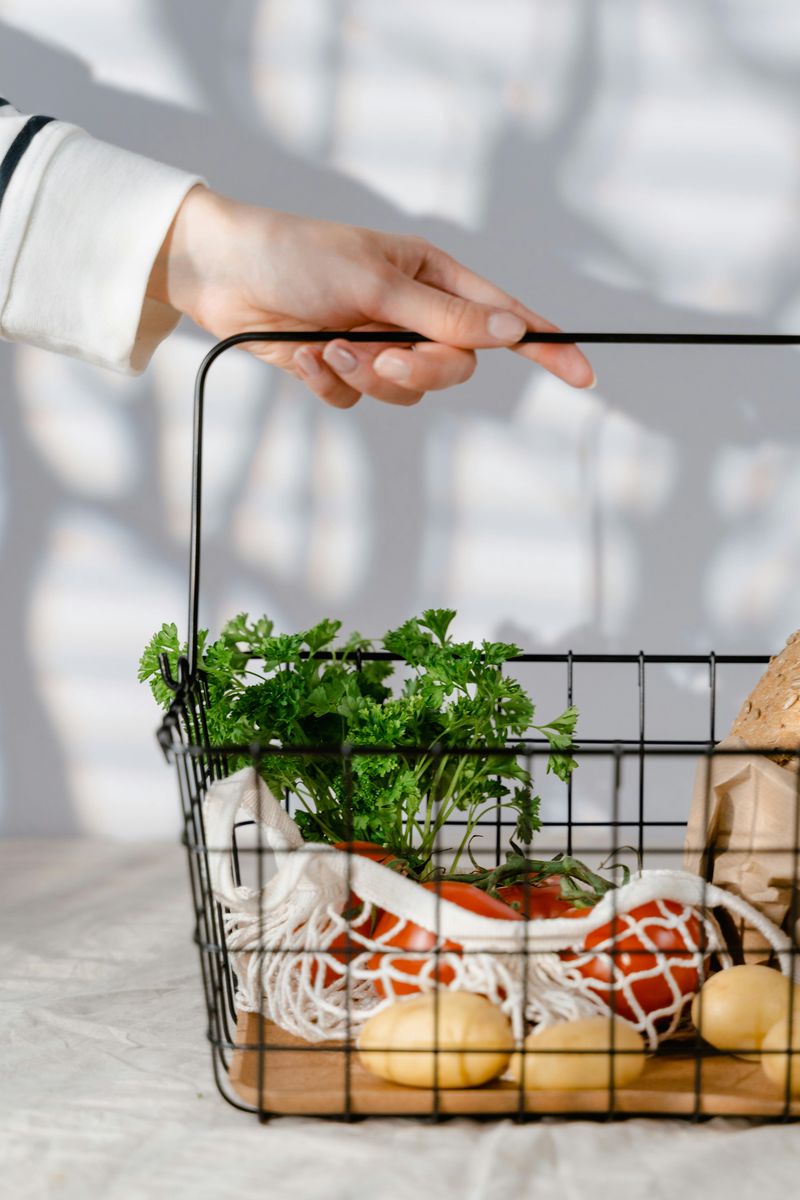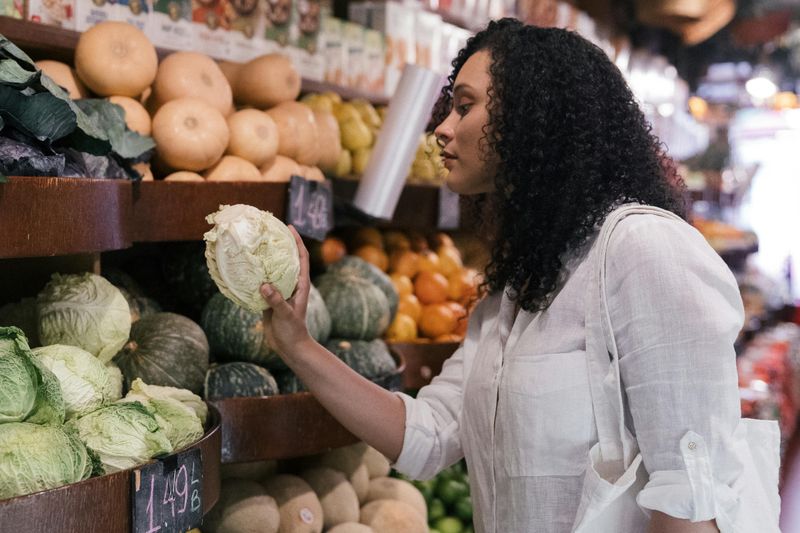Sometimes the last thing you want to do is overthink what to buy at the grocery store. After a long day, standing in the aisles trying to figure out dinner for the week can feel exhausting. The good news is that eating well doesn’t have to mean spending hours planning or wandering around confused. With a few simple strategies, you can fill your cart with healthy, delicious food without the mental gymnastics.
1. Make a Simple Staple-Based List
Keep a running list of your go-to foods that you know your family will eat. Maybe it’s eggs, pasta, chicken breasts, bananas, and spinach. Whatever works for you is perfect.
Having these reliable items written down means you never have to reinvent the wheel each week. You can grab the same trusty foods that always get used up. No guessing, no stress.
When you shop from this list, you’re building meals around what already works. It takes the pressure off completely. You’ll spend less time in the store and waste less food at home, which saves money and energy for things that actually matter.
2. Use a Template for Your Cart
Think of grocery shopping like filling in blanks on a form. Decide on a basic formula, like five vegetables, three proteins, and two grains. This gives your cart structure without making you think too hard.
The beauty of a template is that it keeps your meals balanced automatically. You’re getting variety and nutrition without a complicated plan. One week you might grab broccoli, carrots, peppers, lettuce, and tomatoes. Next week, switch it up with different choices.
Templates also prevent you from buying too much of one thing or forgetting entire food groups. Your meals naturally come together when you get home because you have all the building blocks ready to go.
3. Shop the Perimeter First
Most grocery stores put the freshest foods around the outside edges. That’s where you’ll find produce, dairy, meat, and bakery items. Start there and fill up your cart before heading into the middle aisles.
This strategy naturally guides you toward healthier choices. Fresh foods don’t have long ingredient lists or confusing labels to decode. You can see exactly what you’re getting.
By the time you’ve covered the perimeter, your cart is already full of good stuff. You might not even need much from the center aisles. This approach saves time and keeps your meals simple and nutritious without requiring a nutrition degree to figure it out.
4. Buy Frozen or Canned Basics
Fresh produce is wonderful, but sometimes it spoils before you use it. That’s where frozen and canned options become your secret weapon. Frozen vegetables are picked at peak ripeness and locked in immediately, so they’re actually super nutritious.
Canned beans, tomatoes, and fruits packed in water or juice are pantry heroes. They last forever and require zero prep work. When you’re too tired to cook, these items can save dinner in minutes.
Don’t feel guilty about choosing convenience. A bag of frozen broccoli that you actually eat beats fresh broccoli that turns to mush in your fridge. Stock up on these basics and you’ll always have backup options ready.
5. Stick to Your List Without Deviations
Grocery stores are designed to make you buy more than you need. Bright packages, sale signs, and end-cap displays all scream for your attention. That’s why having a list and actually following it is so powerful.
Before you go in, decide what you need and commit to getting only those items. When you see something tempting, ask yourself if it was important enough to write down. Usually, the answer is no.
This discipline keeps your budget in check and prevents your kitchen from overflowing with random ingredients you’ll never use. You get in, get what you need, and get out. Shopping becomes faster and way less overwhelming when you have clear boundaries.
6. Compare Unit Prices, Not Package Prices
That big container might look like a better deal, but the little numbers on the shelf tag tell the real story. Unit prices show you the cost per ounce or per pound, making it easy to compare different sizes honestly.
Sometimes the medium size is actually cheaper per ounce than the jumbo size. Stores count on you not checking. Taking five extra seconds to look at unit prices can save you serious money over time.
This trick works for everything from cereal to shampoo. You don’t need a calculator or math skills, just a quick glance at those shelf labels. Making smarter choices becomes automatic once you know what to look for on those tags.
7. Favor Store or Generic Brands
Name brands spend millions on advertising, and you pay for that in the price. Store brands and generic options are usually made in the same facilities with similar ingredients, but they cost way less because they skip the fancy marketing.
Try swapping just a few items to generic versions. Most people can’t tell the difference in a blind taste test. Things like flour, sugar, canned goods, and frozen vegetables are almost identical across brands.
The money you save adds up fast. Use those extra dollars for something fun instead of paying for a logo. Your meals will taste just as good, and your wallet will definitely feel happier at checkout time.
8. Plan Meals Loosely to Avoid Waste
You don’t need a detailed meal plan with recipes and exact portions. Just have a rough idea of what you’ll make. Maybe you’re thinking tacos, stir-fry, and pasta this week. That’s enough to guide your shopping without feeling rigid.
Loose planning means you buy ingredients that work for multiple meals. Chicken can be grilled Monday and tossed in pasta Wednesday. Flexibility keeps cooking fun instead of feeling like homework.
When you have a general direction, food doesn’t sit in your fridge getting forgotten. Everything has a purpose, even if you switch up the exact meals. You’ll throw away less and feel better about what you’re eating because nothing goes to waste.
9. Buy in Bulk Only for Sure Things
Bulk buying seems smart until you realize you’re stuck with five pounds of something you don’t actually like. Only buy big quantities of items you absolutely know you’ll use up. Think toilet paper, rice, or pasta that never goes bad.
For foods you eat regularly, bulk can be a great deal. But trendy ingredients or things you’re trying for the first time? Stick with smaller sizes. There’s nothing worse than wasting money on food that expires before you finish it.
Ask yourself honestly how often you’ll use something before committing to a giant container. Being realistic about your habits prevents waste and saves money in the long run, even if the per-unit price looks tempting.
10. Never Shop Hungry
Shopping on an empty stomach is basically asking for trouble. Everything looks amazing when you’re hungry, and your cart fills up with snacks, treats, and random things you’d never normally buy. That’s your stomach talking, not your brain.
Eat something before you go, even if it’s just a quick snack. A banana, some crackers, anything to take the edge off. You’ll make clearer decisions and stick to your list way better.
Studies actually show that hungry shoppers spend significantly more money and choose less healthy foods. Taking ten minutes to eat first protects your budget and your health. It’s such a simple trick, but it works every single time you remember to do it.










